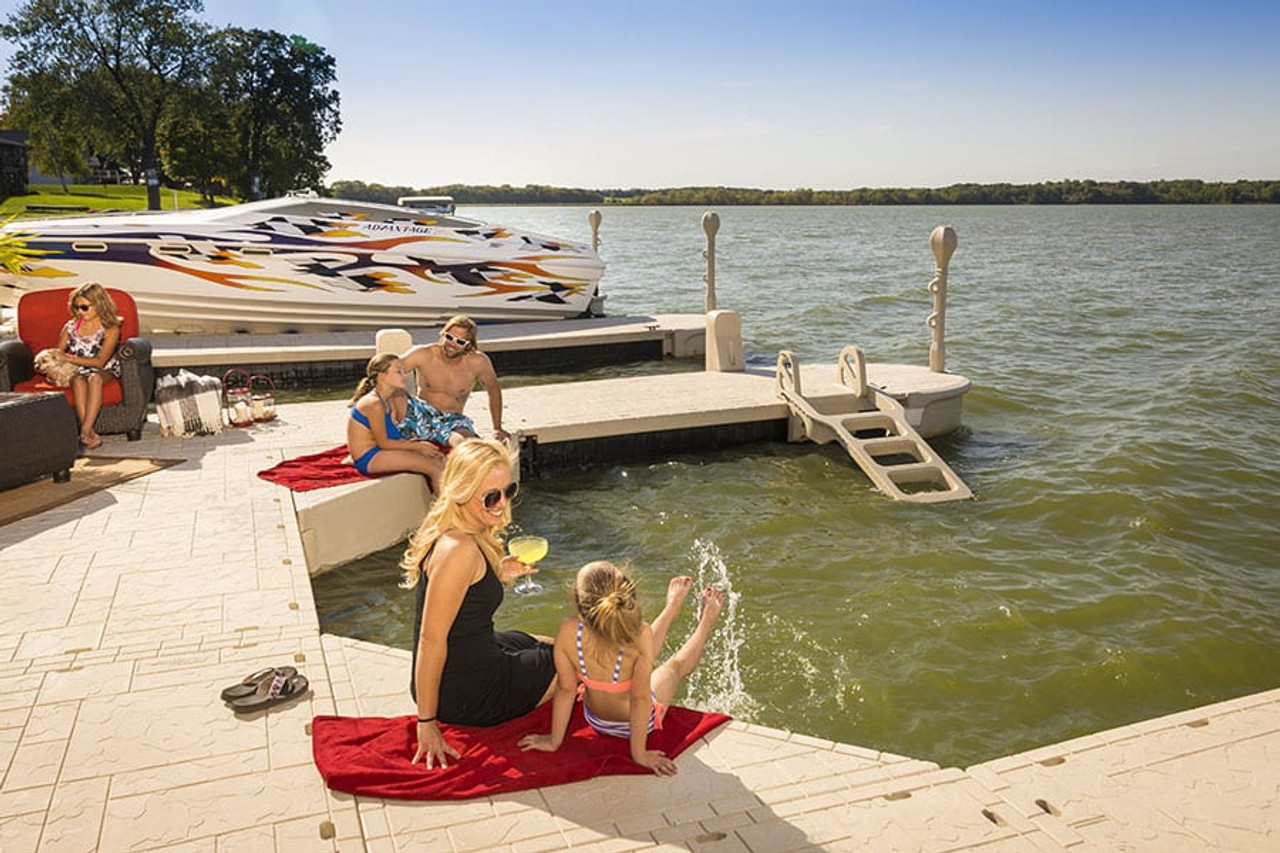Your Guide to Discovering the Best Dock Company for Top Quality and Reliability
Your Guide to Discovering the Best Dock Company for Top Quality and Reliability
Blog Article
Upgrade Your Beachfront With Sturdy Floating Docks
Updating your beachfront with durable floating docks can considerably improve both functionality and aesthetic appeals, supplying a flexible service for various water tasks. With an array of materials offered, including low-maintenance choices and typical timber, picking the right dock can enhance your personal style and satisfy useful needs.
Benefits of Floating Docks
Floating docks offer a multitude of advantages that improve their charm for different maritime applications. Unlike conventional fixed docks, floating docks surge and loss with the tide, guaranteeing constant availability for watercrafts and watercraft no matter of environmental conditions.
In addition, floating docks are much easier to set up and move, supplying flexibility for seasonal or short-term use. Their modular design permits personalization to fit particular demands, whether for private marinas, domestic beachfronts, or commercial applications.
Furthermore, floating docks develop minimal disturbance to the water environment, preserving regional ecosystems and decreasing the probability of erosion. They also give improved security and stability for users, as their buoyant nature provides an extra flexible surface than stiff frameworks.
Furthermore, floating docks can promote a varied variety of activities, such as fishing, swimming, and leisure boating, making them a beneficial property for waterfront growth. Their flexibility and usefulness make floating docks a recommended option for a range of marine projects.
Selecting the Right Products
Picking proper materials for floating docks is important to their durability, efficiency, and overall efficiency. When picking products, consider aspects such as ecological direct exposure, maintenance demands, and structural honesty. Typical materials include timber, plastic, light weight aluminum, and composite options, each offering distinctive advantages and disadvantages.
Wood, while visually pleasing, calls for normal maintenance to stop rot and decay. Pressure-treated timber can enhance durability, yet it may still give in to water damages with time. Plastic drifts, frequently made from high-density polyethylene, are immune to rust and call for very little upkeep, making them an appealing option for low-maintenance applications.
Light weight aluminum is one more sensible choice, understood for its toughness and light-weight buildings. It is immune to rust and can stand up to severe climate condition, although it may be extra costly than various other products. Composite materials combine the very best features of wood and plastic, using a low-maintenance and resilient choice that mimics the appearance of wood without the linked drawbacks.
Ultimately, the selection of product ought to align with the planned use, ecological considerations, and spending plan restrictions, making sure a resilient and functional floating dock that fulfills your certain needs.
Setup Refine Review
The successful installation of a floating dock counts on cautious planning and implementation, guaranteeing that it runs successfully in its intended atmosphere. The primary step involves evaluating site problems, consisting of water deepness, shoreline attributes, and prevailing climate patterns, which will inform the dock style and anchoring system.
Following the website evaluation, the next stage is to prepare the floating dock components. This includes constructing the framework, safeguarding drifts, and attaching any kind of required hardware. It is crucial to make certain that all connections are water-resistant and robust to withstand marine problems.
When the dock is assembled, the installation procedure commences with positioning the dock in the water. This can involve a crane or other training tools, particularly for larger structures. Appropriate alignment is necessary for capability and safety and security.

Upkeep Tips for Durability
Regular maintenance is crucial for making certain the durability and ideal performance of a floating dock. To attain this, begin with routine examinations at the very least two times a year, concentrating on the integrity of the dock's framework, consisting of the flotation devices and connecting equipment. Try to find indications of damage, corrosion, or wear, and address any type of issues quickly to avoid further degeneration.
Cleaning is another vital element of maintenance. Get rid of debris, algae, and barnacles from the dock's surface to stop unsafe problems and preserve aesthetic appeal. Utilize a mild detergent and a soft brush to avoid damaging the dock's materials.
Furthermore, make sure that the dock is appropriately anchored and safeguarded to endure seasonal modifications in water degrees and climate problems. Inspect the anchoring system for security and make modifications as required.
Enhancing Your Outdoor Visual
To develop an aesthetically enticing outdoor space, incorporating a floating dock can substantially improve the general aesthetic of your waterside building. Floating docks are not only practical but can additionally act as a striking focal factor that complements the all-natural environments - floating dock builder. Readily available in various materials and layouts, these docks can be customized to match your residential or commercial property's architectural design and landscape
The addition of attractive components, such as incorporated lights or elegant railings, even more boosts the dock's aesthetic allure. Take into consideration making use of natural wood coatings, which blend effortlessly with the atmosphere, or going with modern-day materials like light weight aluminum or composite outdoor decking that provide a streamlined, contemporary look.
Tactically positioning planters or seating areas on or around the dock can develop inviting rooms that encourage leisure and satisfaction of waterfront views. Additionally, including colors and textures that my explanation balance with your landscape will certainly create a natural aesthetic throughout your outside area.

Conclusion

Upgrading your waterside with long lasting floating docks can considerably boost both performance and aesthetic appeals, giving a flexible remedy for numerous water activities. Unlike traditional set docks, floating docks increase and web link fall with the tide, ensuring constant availability for boats and watercraft no matter of environmental problems.Choosing suitable materials for floating docks is crucial to their long life, efficiency, and general performance.Once the dock is constructed, the setup procedure commences with placing the dock in the water.In summary, floating docks deal many advantages, consisting of versatility to water degree adjustments and a variety of product choices.
Report this page